thewirecutter
Latest

The best portable laptop charger
By Sarah Witman This post was done in partnership with Wirecutter. When readers choose to buy Wirecutter's independently chosen editorial picks, Wirecutter and Engadget may earn affiliate commission. Read the full guide to portable laptop chargers. We spent 15 hours researching and 41 hours testing five top portable laptop chargers, and we found that the Mophie Powerstation AC is the best option if you want the ability to charge your computer and smaller devices while traveling, in an emergency, or whenever power outlets are out of reach. It can power laptops as robust as the 15-inch MacBook Pro, it's compact and lightweight, and it charges via USB-C—an increasingly ubiquitous standard. Mophie's charger is the one we'd buy ourselves. It's the smallest laptop charger we tested and one of the lightest. But it still performed well in our testing with more than 100 W of power output and enough capacity to bring a dead MacBook Air up to 81 percent charged, even during heavy use. It also has the best look and feel of any we tried—we really like how its slim, portable design and professional-looking fabric exterior is complemented by well-placed ports and a magnetic rubber flap protecting the AC output port. Plus, it's made by a company we trust, and its 24-month warranty is as good as any we found.
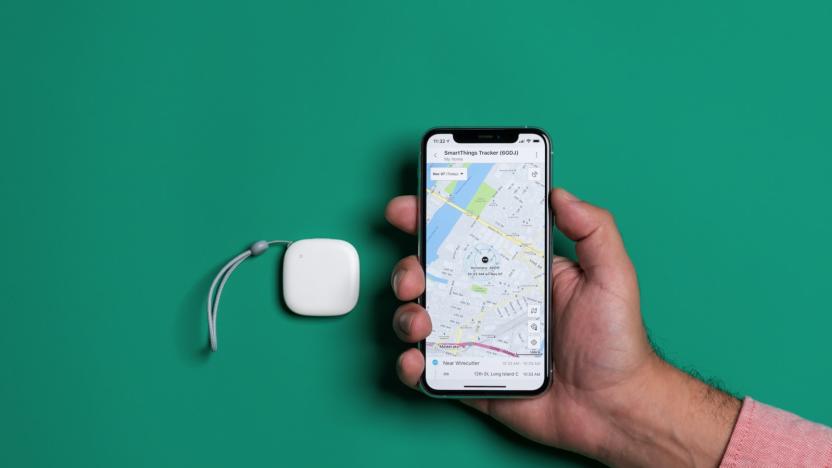
The best cellular GPS tracker
By Nick Guy This post was done in partnership with Wirecutter. When readers choose to buy Wirecutter's independently chosen editorial picks, Wirecutter and Engadget may earn affiliate commission. Read the full guide to cellular GPS trackers. While a Bluetooth tracker is useful for finding your keys or wallet at home, if you want to keep track of your kids or where you left the car, get a cellular GPS tracker. Small enough for you to stow them in a bag or pocket, these devices connect to a cell signal so you can locate them with an app—from nearly any distance. The Samsung SmartThings Tracker (AT&T) is our pick because its battery lasts for days, its tracking is accurate, and it doesn't require you to be a customer of a specific carrier. The Samsung SmartThings Tracker (AT&T) provides fast and accurate location reporting, and it supports live tracking and geofencing alerts so you can receive notifications quickly if it leaves a zone you designate. In our tests, its battery lasted four-plus days, and Samsung says it can go as long as 10 depending on usage. The crucial differentiator between the Samsung tracker and other models we considered is that it's not tied to a specific carrier: Although it relies on AT&T's cell network for service, anyone can use it without being tied to any sort of smartphone contract. Verizon's Smart Locator updates its location a little more rapidly than the Samsung SmartThings Tracker but otherwise has similar features, including geofencing and live tracking, and in our testing its battery lasted four or five days before needing to be recharged. But the downside is that in order to buy or use this tracker you need to also have a new or existing Verizon cell phone plan. Although Verizon is a great network and has a huge customer base, we can't recommend the Smart Locator for everyone since for many people it would require switching carriers. If you have a Verizon plan already, go for it.

The best bag and cable organizers
By Kaitlyn Wells This post was done in partnership with Wirecutter. When readers choose to buy Wirecutter's independently chosen editorial picks, Wirecutter and Engadget may earn affiliate commission. Read the full guide to bag and cable organizers. Whether you commute to the office or the coffee shop, you probably need a way to organize the pens, tech accessories, and toiletries you take with you every day. To find the best options to carry what different people might need with them, we spent over a week researching 65 bag organizers and testing 27 of them, and we found seven organizers we liked for their style, durability, and usability. Some backpacks and purses come with all the pockets and loops you'd need, but others are black holes, swallowing charging cables and tubes of lip balm. For those people (and I count myself among them), the right bag organizer simplifies grabbing accessories while on the go, or moving gear from one bag to another. But everyone has different carrying needs, which is why we have picks to suit a variety of situations: a tech-forward cable organizer that zips closed, a customizable mesh-pouch setup, picks that prioritize toiletries (while making room for tech), and a stylish duo of cosmetic travel pouches made of premium materials—as well as some alternatives where applicable.
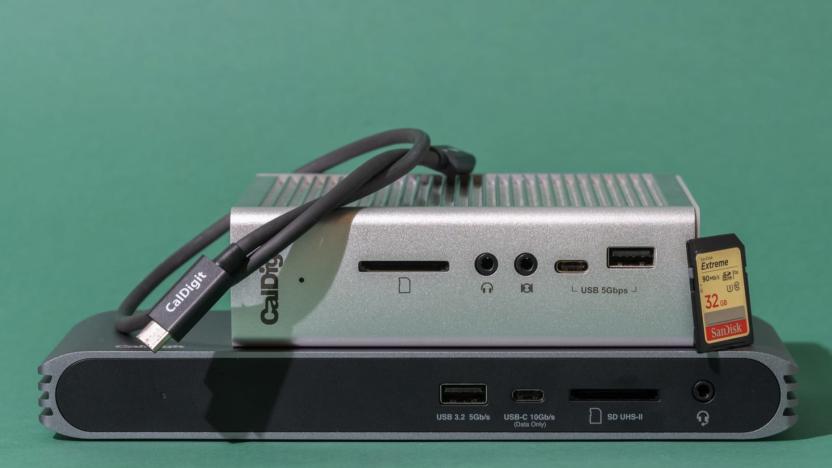
The best Thunderbolt 3 docks
By Nick Guy This post was done in partnership with Wirecutter. When readers choose to buy Wirecutter's independently chosen editorial picks, Wirecutter and Engadget may earn affiliate commission. Read the full guide to thunderbolt 3 docks. After putting in more than 25 hours of research and hands-on testing 13 Thunderbolt 3 docks with more than $7,000 worth of high-end gear, we think CalDigit's TS3 Plus remains the best choice for Mac or PC owners who need to connect multiple displays, USB-A input devices, and high-speed storage. It has more useful ports than most docks, it can charge most laptops at full speed, and it takes up little room on a desk. The CalDigit TS3 Plus has the most useful array of connections we found, starting with two Thunderbolt 3 ports, five USB-A ports, and two USB-C ports (one USB 3.2 Gen 1, one USB 3.2 Gen 2). It also has an SD card slot, a DisplayPort connector (which works with HDMI via an inexpensive adapter), Gigabit Ethernet, audio-in and -out jacks, and an S/PDIF jack for digital optical audio—the last one a rarity in these devices. And while most docks have a horizontal orientation, you can also position the TS3 Plus vertically to minimize its footprint. All current Apple laptops and desktops have Thunderbolt 3 ports, as do a lot of newer PCs, such as our top ultrabook picks; check your computer's manual. If a cheaper USB-C hub or dock can't meet your needs and you need the extra bandwidth of Thunderbolt 3, this CalDigit model has the best combination of ports, size, and shape we've yet found. CalDigit's USB-C Pro Dock is less expensive than the TS3 Plus but has most of the same features. It's also designed to be compatible with computers that have USB-C but not Thunderbolt 3, making it a good fit if you need a dock that can work with lots of different kinds of computers. This dock has three fewer USB ports (three are USB-A, and one is USB-C), an SD card slot, two DisplayPort outputs, Ethernet, and audio, and it supports the same 85-watt power output. But it doesn't have a spare Thunderbolt 3 port, so you can't daisy-chain Thunderbolt devices. The USB-C Pro Dock is also larger than the TS3 Plus, but for the price, we think this model's sacrifices are forgivable. In addition to a middle-of-the-road three USB-A ports, the HP Thunderbolt Dock 120W G2 offers a second USB-C port, making this dock more useful if you have more modern accessories and don't need access to as many older devices at once. It also includes two DisplayPort connectors, so you can attach two displays at the same time without taking up your Thunderbolt 3 port. We like its small cube shape and its low price.

The best USB-C laptop and tablet chargers
By Nick Guy This post was done in partnership with Wirecutter. When readers choose to buy Wirecutter's independently chosen editorial picks, Wirecutter and Engadget may earn affiliate commission. Read the full guide to USB-C laptop and tablet chargers. While it used to be difficult and expensive to buy a new laptop charger, computers with USB-C charging have made replacements easier and more affordable than ever. The best charger for almost any modern tablet or laptop is Nekteck's 60W Type-C Wall Charger. This adapter is just as powerful and reliable as a replacement from your laptop's manufacturer. It even comes with a USB-C charging cable, making it a better value. Whether you need to replace your original charger or just want to have an extra at home or the office, you should get the Nekteck 60W Type-C Wall Charger. It will charge almost any USB-C laptop at full speed, power 2018 iPad Pros faster than the brick that comes in the box, and even fast charge most modern smartphones. The Nekteck is also smaller than any other 60-watt charger we've found and comes with a detachable cable, which is something that'll usually costs $10 to $20 on its own. Despite all these benefits, it costs about a third the price of the equivalent charger and cable from Apple.
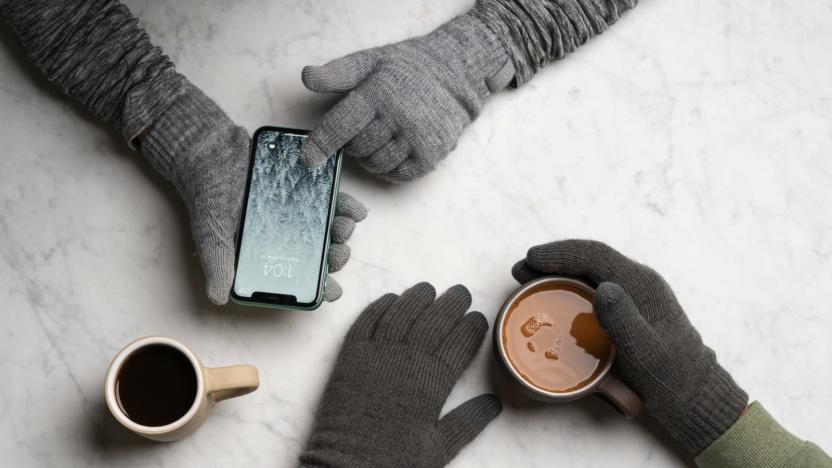
The best touchscreen winter gloves
By Nick Guy, Kaitlyn Wells, and Justin Krajeski This post was done in partnership with Wirecutter. When readers choose to buy Wirecutter's independently chosen editorial picks, Wirecutter and Engadget may earn affiliate commission. Read the full guide to touchscreen winter gloves. The best touchscreen gloves are ones that can differentiate between "texting" and "textjngZ." And after testing 20 more pairs this year, we think the newly redesigned Moshi Digits Touchscreen Gloves are some of the best we've seen of the 80 we've tried overall. They're warm enough, accurate, and can fit a wide range of hand sizes. Although no pair of touchscreen gloves is going to keep your hands perfectly warm or let you type as well as you would with bare fingers, the Moshi Digits were warmer, fit better, and were more accurate in typing tests than the competition. If you want a good pair of touchscreen liner gloves instead, we have a pick for that. If you want a thinner glove for fall weather or prefer the classic look of leather, we also have picks for those. Do keep in mind, though, that ultimately it may be easier to use voice commands and audio messages, rather than trying to type in even the best of these gloves.
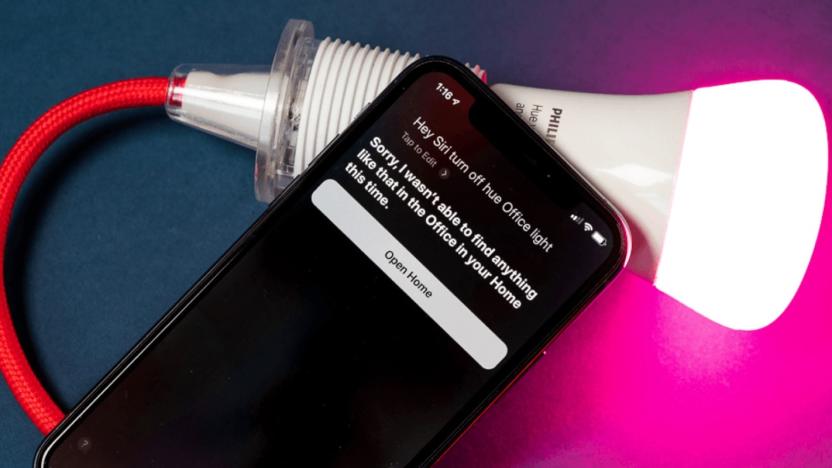
Why your new smart home devices won't work, and how to fix them
By Rachel Cericola This post was done in partnership with Wirecutter. When readers choose to buy Wirecutter's independently chosen editorial picks, Wirecutter and Engadget may earn affiliate commission. Read the full blog why your brand-new smart home devices won't work, and how to fix them. Christmas morning should have been a time of giving and togetherness, not shattered dreams and nervous breakdowns. But sometimes joy turns to anger when your friend or loved one gets stuck trying to set up a smart-home device they received as a gift. Because these devices may require complicated setups, including smartphone apps, Wi-Fi passwords, and integration with a smart speaker, there are a lot of ways things could go wrong. Before you call someone a name you can't take back, take a breath and read our answers to the most common smart-home questions we receive.
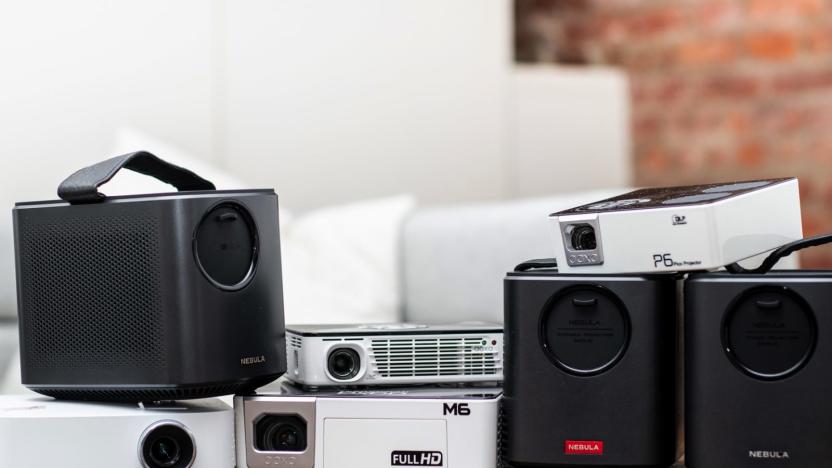
The best portable mini projector
By Daniel Varghese and Adrienne Maxwell This post was done in partnership with Wirecutter. When readers choose to buy Wirecutter's independently chosen editorial picks, Wirecutter and Engadget may earn affiliate commission. Read the full guide to portable mini projectors. A mini projector combines the portable convenience of a phone or tablet with the big-screen appeal of a TV. Although none of the 16 models we tested rivals the performance of a good TV or full-size projector, we like the Anker Nebula Mars II Pro the best because of its ease of use, great Android OS, solid battery life, and decent image quality. The Anker Nebula Mars II Pro delivers the best combination of features, performance, and ease of use of any mini projector we tested. It offers plenty of connection options, and it features an Android operating system to stream services such as Netflix, Amazon Prime Video, and Hulu. Its automatic focus and keystoning, its well-laid-out remote, and its intuitive mobile remote app make the Mars II Pro the easiest projector to set up and use, and its three-hour-plus battery life will get you through a long movie. None of the mini projectors we tested delivered a picture as bright, engaging, or accurate as the image from a good-performing traditional projector, but the Mars II Pro offers solid performance that's perfectly acceptable for casual viewing. The Mars II Pro is a bit larger than other mini projectors we tested (measuring 5.43 by 4.8 by 7 inches and weighing 3.94 pounds), but it's still smaller than a traditional projector and has a convenient carrying strap.
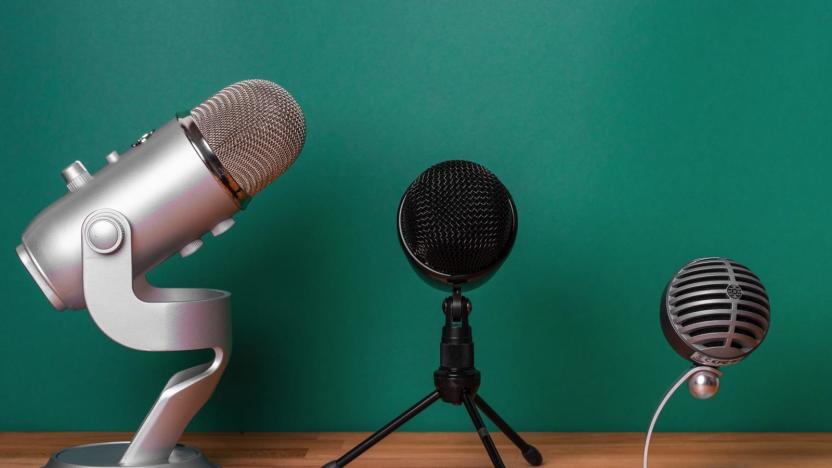
The best USB microphone
By Melanie Pinola and Kevin Purdy This post was done in partnership with Wirecutter. When readers choose to buy Wirecutter's independently chosen editorial picks, Wirecutter and Engadget may earn affiliate commission. Read the full guide to USB microphones. The built-in microphones on most computers don't do your voice justice—they're likely to pick up too much room tone, add too much fuzz, and miss out on the warm tones of being in the same room as someone. Whether you're on a conference call or recording a podcast, a standalone mic connected over USB will help you sound your best. After testing more than 25 different USB microphones over the past six years with the help of audio professionals, we've found that the Blue Yeti is still the best microphone for most people. The Yeti has been our pick since 2013 and has come out on top during every retest of available microphones. In our latest blind test with two Wirecutter staffers and three professional audio engineers, all five experts ranked Yeti recordings at or near the top of the samples they listened to because it produced clear and rich recordings and preserved our speakers' natural vocal warmth. This is a microphone that both amateurs and professionals turn to for their voice or music work and one that will last for years. If you're looking for a portable mic or one that doesn't hog your desk space, the Shure MV5 is a better option than the Yeti. When using the voice preset, all our experts ranked the audio samples in their top three, with one audio engineer even rating it best. The mic (when unscrewed from its stand) is about the size and shape of a stress ball or pool table eight ball; you'll hardly notice it on your desk more than you would a big paperweight. It can also plug directly into an iPhone, iPad, or Android device. Although it doesn't have the additional sound pickup patterns that the Yeti does, the MV5 is a fine single-voice microphone. The small size makes it much easier to pack in a bag than the Yeti—but that also means you'll have to figure out how to prop it up to match your speaking height. The AmazonBasics Desktop Mini Condenser Microphone is as no-frills as you can get while delivering surprisingly good audio quality. Basically, you plug it in and start talking, because other than a mute button, there's nothing else to fiddle with. Despite its simplicity and low price, four out of five of our audio experts ranked this in their top three mics, with two of them even choosing it as best (one preferred it for female voices while another chose it for male voices). It doesn't feel as durable as the Yeti and isn't as compact as the Shure MV5, but it's a good compromise if all you want to do is sound better and clearer than how your computer's mic makes you sound.
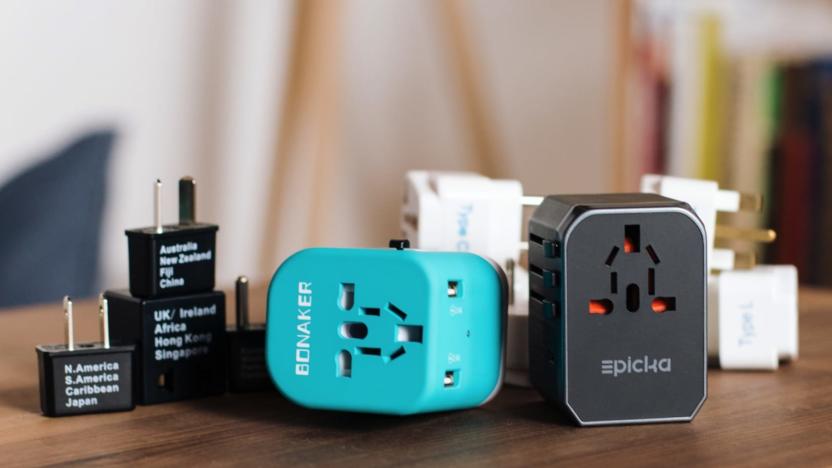
The best travel plug adapter
By Geoffrey Morrison This post was done in partnership with Wirecutter. When readers choose to buy Wirecutter's independently chosen editorial picks, Wirecutter and Engadget may earn affiliate commission. Read the full guide to travel plug adapters. After spending more than 30 hours researching and testing 12 travel plug adapters, we found the Epicka Universal Travel Adapter to be the best of the options. It fits four types of outlets, and it has more USB ports than any of its competitors, so it can can charge more devices at higher speeds. If you prefer the small size and weight of a plug adapter, we recommend the Ceptics International Worldwide 5 Piece Set. In a sea of almost-identical travel adapters, the Epicka Universal Travel Adapter stands out, combining the best of the features we were looking for. It contains the three most common international plugs and a US-style plug, which should cover you in the majority of countries around the world. It has the most USB ports—four of the standard USB-A and one USB-C—of any universal adapter we tested, and it could charge more of our devices faster. A replaceable fuse and an included spare should take the brunt of any accidental, unfortunate, or shockingly bad connections. The Epicka is fairly compact and well built, and it even comes with an extra USB cable and a nylon case. If the Epicka isn't available, the Bonaker Universal Travel Adapter is a worthy alternative. It includes the same four types of plugs and four USB-A ports—but no USB-C. It also can't charge as many devices at full speed as the Epicka can, although it's still faster than most of the others we tested. It too has a replaceable fuse and a spare, and it comes with a carrying case. However, no universal travel adapter is truly universal, and they're all a lot bulkier and more expensive than simple plug adapters. If you want the smallest adapter possible, or if you're going someplace where a universal adapter won't work (more on that in a minute), then a plug adapter could be what you need. The Ceptics tiny plug adapters are barely larger than the prongs they convert. Small, simple, and cheap, they're perfect for someone who wants to carry only the adapter they'll need and who already has a multiport USB wall charger they like. Like our universal adapter picks, this set contains the three most common international plugs and the US plug. However, it also includes a somewhat rarer plug used in some European countries that has two thick, cylindrical prongs. This means that the Ceptics will likely cover you in even more places—as long as you pack the appropriate plug adapter. These plug adapters are bigger than our top pick for plug adapters, but this means they offer a larger surface for chargers to brace against, which makes them more stable and less likely to fall off the wall. (We'll call these "Ceptics White" to minimize confusion and set them apart from our "Ceptics Black" top pick.) While you can purchase these as a five-pack, which contains basically the same assortment of plugs as the Ceptics Black set, the company also sells, in this same model line, three-packs for nearly a dozen specific regions. So if you're headed to a country not covered by the so-called universal travel adapters (for example, Brazil, India, Israel, or South Africa), or if you want to purchase multiple adapters for your gear, there's probably an option available here. A note up here, which we'll discuss in detail below: All of these are adapters only. They do not convert voltage. The majority of your electronic devices only need adapters—the voltage converter is built into the charger itself. (If the device charges via USB, just about any USB port will suffice, though different ports may provide different charging speeds.) Check out Do you need a voltage converter? if you're curious about these aspects.
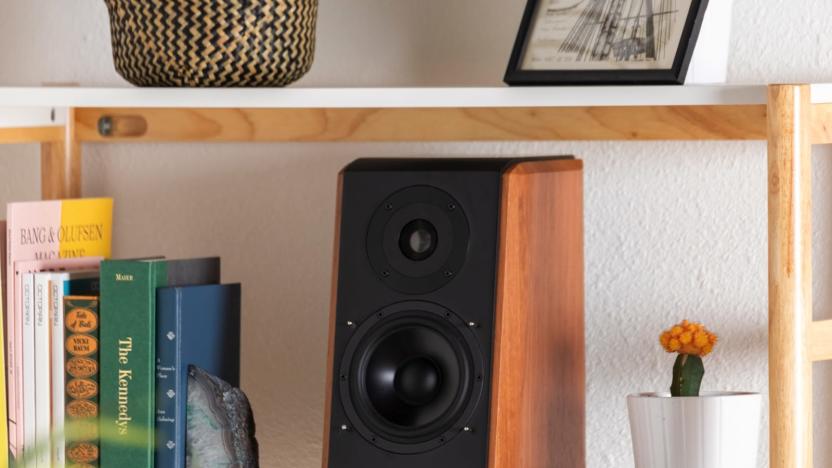
The best wireless powered bookshelf speakers
By Brent Butterworth This post was done in partnership with Wirecutter. When readers choose to buy Wirecutter's independently chosen editorial picks, Wirecutter and Engadget may earn affiliate commission. Read the full guide to wireless powered bookshelf speakers. The best wireless bookshelf speaker system we've found priced under $800 is the Edifier S1000DB. With built-in Bluetooth and both analog and digital inputs, this active speaker pair connects to smartphones, computers, and TVs, and lets you easily create a stereo system without a separate amplifier or receiver. The SB1000DB doesn't include Wi-Fi audio streaming or a phono input for a turntable, but those features are easy to add (and if you're a vinyl enthusiast, we have a turntable-ready pick for you too). Our panelists picked the Edifier S1000DB as the best sounding of all the powered, wireless bookshelf speaker systems we tested, and yet it was far from the most expensive. It's the only system we found that had respectable deep-bass response, due in part to its larger 5.5-inch woofers, and it has tone controls for fine-tuning the sound. It includes a nice remote control and both analog and digital inputs, but there's no built-in Wi-Fi or phono input. The speakers are nicely crafted, but they may be a bit large for some spaces, and their styling is straight out of the 1990s. Even though the Audioengine HD3 speakers measure only 7 inches high, they put out a surprisingly full sound that won over our panelists. They can't pump out low bass, but they don't sound thin, either—and the inclusion of an analog output gives the option to add a subwoofer. The HD3 system's small size makes it ideal for offices and bedrooms, and it offers a rich feature set, including aptX HD Bluetooth, a USB digital input, and a front headphone output. The Klipsch R-51PM is a great choice for vinyl record enthusiasts because it includes a phono input, so you can easily connect most record players without having to buy a separate preamp. The addition of USB and optical digital inputs, a subwoofer output, and a nice remote control gives the system excellent versatility, but it comes at a higher cost. The audio performance isn't quite as good as that of our top pick, but the 5.25-inch woofer in each speaker does allow the system to produce a reasonable amount of bass. We also like its styling, a modern update of Klipsch's classic horn design.

The best Bluetooth tracker
By Nick Guy This post was done in partnership with Wirecutter. When readers choose to buy Wirecutter's independently chosen editorial picks, Wirecutter and Engadget may earn affiliate commission. Read the full guide to bluetooth trackers. If you find that you're often scrambling to locate your keys or bag as you're heading out the door, a Bluetooth tracker can be a lifesaver. Tile Mate (2020) is the one you should attach to your gear. It has a range that's long enough to cover most homes or workplaces, a loud alarm, and a replaceable battery. And it costs a little less than the top-of-the-line Tile Pro (2020). Bluetooth trackers let you use a smartphone app to monitor the location of whatever they're attached to, and Tile as a company has become synonymous with trackers in the way Kleenex is with facial tissue. In our testing, the Tile Mate's 150-foot range didn't quite measure up to the 190-plus-foot range of the Tile Pro, but it's long enough that most people won't go out of range in their house or at the office. You can also remotely trigger a sound on the tracker to locate it when you're nearby (say, when you've misplaced your keys in your house), and the Tile Mate is just as loud as more expensive models. When the tracker is out of Bluetooth range, a crowd-finding feature allows others with the Tile app to help you locate your item, and Tile has the largest network of its kind. Tile Slim (2020) and Tile Sticker (2020) have shorter ranges and quieter alarms than the Tile Mate, and they don't have user-replaceable batteries. But they are designed to be used in different places, and they offer all of the benefits of the Tile ecosystem. The former is modeled on a credit card and designed for your wallet; the latter is tiny and can adhere to pretty much anything. The Tile Essentials (2020) bundle includes a Tile Mate, a Tile Slim, and two Tile Stickers at a discount, so it's a good starter combination.
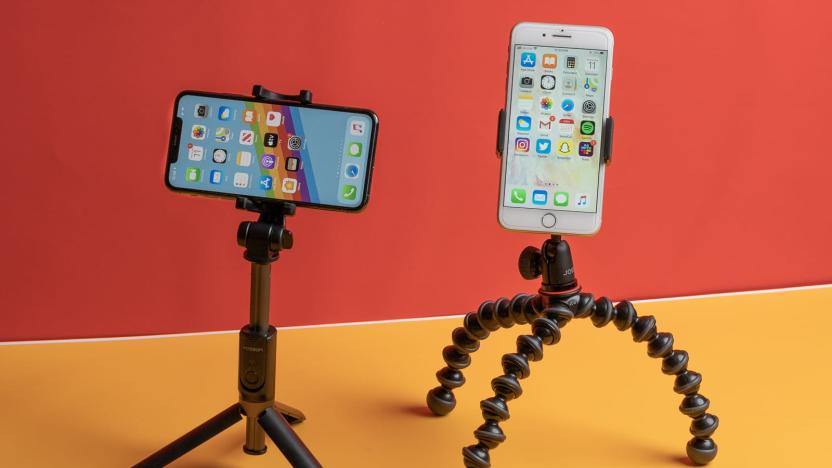
The best tripod for iPhones and other smartphones
By Erin Lodi and Signe Brewster This post was done in partnership with Wirecutter. When readers choose to buy Wirecutter's independently chosen editorial picks, Wirecutter and Engadget may earn affiliate commission. Read the full guide to tripods for iPhones and other smartphones. If you've ever compared who has the longest arms to take a group selfie or struggled to keep your smartphone stable while shooting video, a tripod and mount made specifically for phones might make your life easier. We recommend using the Joby GorillaPod 1K Kit and the Square Jellyfish Metal Spring Tripod Mount together as the best smartphone tripod and mount, after testing dozens of options along the trails of the Pacific Northwest, in the urban forests of Minnesota, and on the streets of Seattle. If you use your smartphone for low-light photography, time-lapses, selfies, or slow-motion video—or if you just like putting your phone in places that you can't easily reach by hand—this pair holds any smartphone steady at any angle, yet the GorillaPod and Square Jellyfish combo is still small enough to toss into your shoulder bag. Joby's GorillaPod 1K Kit is stronger and more flexible than anything else out there for the price. The ball-head mount moves smoothly and the long, articulated legs wrap around most anything, such as a tree branch or street signpost. At 10.24 inches from mount to foot, it's about 4 inches longer than most of the no-name, cheaper options; this gives it more reach for selfies and can help it wrap around thicker branches and posts. Additionally, its 2.2-pound weight limit is enough to support most compact cameras and even some mirrorless setups. Unlike other models we looked at, the Square Jellyfish mount can hold a large smartphone stable in portrait or landscape orientation even without a stand. As small as a set of keys, the Square Jellyfish mount easily holds an iPhone 11 Pro Max and is stable enough to stand on its own in both vertical and horizontal orientations even without a tripod. Just make sure you get the metal mount version because there are user reports of the threads, which let you attach the mount to any standard tripod screw, wearing out over time on the cheaper plastic one. We chose to pair the Square Jellyfish with the GorillaPod 1K Kit because it is a more secure mount than the one that Joby pairs with its other kits. If you need both a selfie stick and a tripod, the Yoozon Selfie Stick is an affordable two-in-one that quickly transforms from a telescoping arm extender to a tabletop tripod. It can't grip a tree branch or street sign like the GorillaPod 1K, but it does come with a stick-of-gum-sized Bluetooth trigger—pair it with your phone and press its button to grab shots from afar.
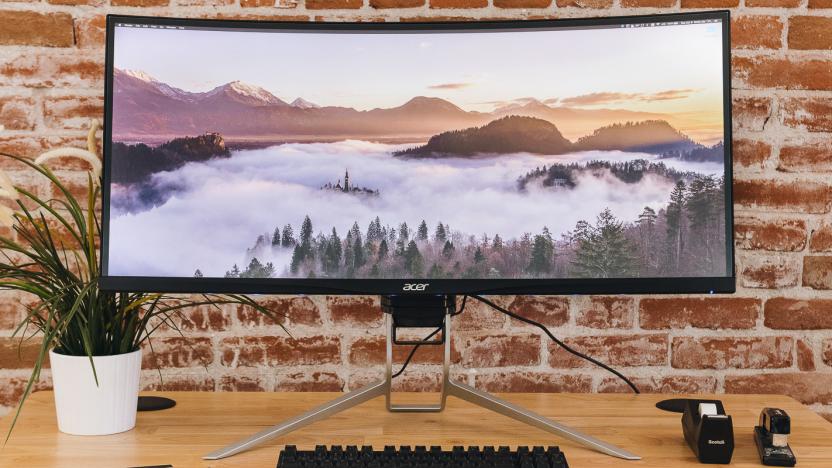
The best ultrawide monitors
By Thorin Klosowski This post was done in partnership with Wirecutter. When readers choose to buy Wirecutter's independently chosen editorial picks, Wirecutter and Engadget may earn affiliate commission. Read the full guide to ultrawide monitors. After spending 10 hours researching monitors and then 25 hours testing five, we found that the Acer XR342CK Pbmiiqphuzx (yes, that's the full model name) is the best ultrawide monitor. The 34-inch, 3440×1440-pixel display is as color accurate as we've seen in an ultrawide. The display's wide resolution makes it an excellent replacement for a dual-monitor setup, provided you're willing to pay between $600 and $700. The viewable space of the Acer XR342CK is just short of what you get from two 24-inch 1080p monitors. This monitor is huge, and the adjustable stand lifts, tilts, and swivels. Its two HDMI ports and DisplayPort offer plenty of ways to connect devices, and the four-port USB hub lets you easily keep cable clutter to a minimum. The XR342CK is the only ultrawide in this price range with a USB-C port that outputs 60 W, so you can connect and charge a modern MacBook Pro or Windows laptop with a single cable. And it supports a few nice-to-have features such as a faster-than-normal 100 Hz refresh rate and AMD's FreeSync (it also works with Nvidia cards in our testing), which makes it an excellent choice for gaming. But the picture-by-picture mode on this Acer model doesn't work as we expect, making the XR342CK a bad choice for two-computer setups. Although this model has an HDR mode, we recommend leaving that off because it makes everything look worse. And its three-year warranty doesn't cover pixel failure like the warranty for our runner-up, the Dell U3419W, does. If the Acer isn't available, or if you want to connect two computers to one monitor, get the Dell U3419W. It's as color-accurate as the Acer and has a similar selection of ports but typically costs more. Alongside a USB-C port that provides up to 90 W of power to a connected laptop, the U3419W has two upstream USB ports so you can connect two computers to the built-in KVM switch. (The USB-C port also works as an upstream port.) This Dell model's picture-by-picture mode is much better than that of the Acer monitor, making the U3419W the more useful option if you're replacing a two-computer, dual-monitor setup. Like Acer, Dell offers a three-year warranty, but Dell's covers more, including replacing the monitor if a pixel dims or burns out.

What's the best vacuum for pet hair?
By Tim Heffernan This post was done in partnership with Wirecutter. When readers choose to buy Wirecutter's independently chosen editorial picks, Wirecutter and Engadget may earn affiliate commission. Read the full guide what's the best vacuum for pet hair? As any pet owner (I have a cat) knows, even if you own a good vacuum (I have two of our picks, a Miele canister and a cordless Dyson V7), there still always seems to be some pet hair around. So instead of asking what's the best vacuum for pet hair, we asked ourselves something more to the point: What's the best way to keep pet hair to a minimum in your home? Any good vacuum—upright or canister, corded or cordless—will do an excellent job of picking up pet hair, on both hard floors and carpets. We've tested all these styles, using bagfuls of genuine cat and dog hair, and all our picks excelled at the task. The reason you're seeing pet hair around is that pets shed constantly, so no matter how good your vacuum is, you're unlikely to keep up—unless you have a vacuum that can work constantly. In other words, a robot vacuum is the best vacuum for pet hair. For most pet owners, our top pick, the iRobot Roomba 614, is the best choice among robot vacuums for pet hair: It's a sturdy, repairable robot that doesn't sacrifice cleaning power for affordability. The cleaning capacity of our recommended Roomba models can easily clean a multi-pet household, as well as spaces with a lot of pile rugs and carpet. The iRobot Roomba 675 has the same cleaning power, but also connects to Wi-Fi (if you want it to) and can be controlled from an app or with Alexa voice commands. Our budget pick, the Eufy RoboVac 11S, has the advantage of being the quietest robovac we've tested, but is better suited to a single-pet house with its low-powered cleaning. To date, we've tested more than two dozen models for our guide to robot vacuums. Below, five pet-owning Wirecutter staffers describe their experiences when using a robot vacuum for pet hair in depth. In short, we have found that robovacs work great, keeping hair under control automatically and leaving pet owners free to focus on other tasks. But we've also found that a manual vacuum is still occasionally necessary for tough jobs and deep cleaning.

The best fast chargers for every device
By Nick Guy This post was done in partnership with Wirecutter. When readers choose to buy Wirecutter's independently chosen editorial picks, Wirecutter and Engadget may earn affiliate commission. Read the full guide to fast chargers for every device. The outdated USB chargers clogging store shelves and online listings—and still included in the box with new iPhones—won't charge your latest gear as fast as possible. New fast chargers are safe, affordable, and up to three times faster than the old ones many people have had lying around for years. We've tested the best fast chargers—no matter what phone, tablet, or computer you use—and collected our recommendations on this page.

The best plug-in smart outlet
By Rachel Cericola This post was done in partnership with Wirecutter. When readers choose to buy Wirecutter's independently chosen editorial picks, Wirecutter and Engadget may earn affiliate commission. Read the full guide to plug-in smart outlets. A smart plug can make magic, turning any electronic device into one that can be controlled remotely or put on a schedule. That means you'll never have to enter a dark room or worry that you left the curling iron plugged in. We recommend the Wemo Mini, a reliable Wi-Fi smart plug that works with most major smart-home platforms, including Amazon Alexa, Apple HomeKit, and Google Assistant. The Wemo Mini is the only model that has been rock-solid reliable over long-term use, offers a compact design that won't block both outlets on a wall plate, and supports all the major voice-control platforms. Like most of the smart plug-in switches we tested, the Wemo Mini is easy to set up: Plug it into an outlet, download an app to your phone, make the wireless connection, and then control lamps, small appliances, and even higher-draw devices like fans and air conditioners. The Wemo family also includes light switches and dimmers, so it's easy to expand your system. The Lutron Caséta Smart Lighting Lamp Dimmer costs more than most smart plugs, but it has two outlets, allowing you to control two lamps or strings of lights at once (though not independently). And it lets you dim those lamps rather than just turning them on and off—a rarity among smart plugs. The Caséta system connects over a robust wireless mesh network, rather than Wi-Fi, so Wi-Fi dead spots in your house aren't a problem, but it requires Lutron's proprietary Caséta Smart Bridge hub. We recommend you buy a kit that includes the hub. This outlet supports only lamps, not fans or other motors, but the Caséta line includes compatible in-wall dimmers, window shades, and remotes, so this model is ideal for people who want a larger smart-home system. It works with Amazon Alexa, Apple HomeKit, Google Assistant, Nest, Samsung SmartThings, Wink, and more. The iClever IC-BS06 smart plug can weather the outdoors better than you can, with the best operating temperature (–4 to 140 degrees Fahrenheit) of any model we tested. It has two plugs you can control remotely and independently using the app or voice control (via Amazon Alexa and Google Assistant, but not Siri), and you can configure automations based on time, weather, humidity, temperature, air quality, sunrise and sunset, or triggers from other iClever devices. The TP-Link HS300 is a little pricier than the average smart plug, but it's worth it as it transforms one wall plug into six independently controlled outlets. Of the smart power strips we tested, it also has the most USB ports (three) and the longest power cord. It also supports voice control via Alexa, Google Assistant, Microsoft Cortana, and automations via IFTTT. The lowest priced model on our list is also the smallest—making it possible to fit the Monoprice Stitch Mini into almost any outlet in the house without crowding. It's also the least expensive model we've seen to include energy monitoring. Currently, it supports only Alexa and Google Assistant (and IFTTT unofficially), but you can also set schedules that are triggered by sunrise and sunset and local weather conditions.

The best DNA testing kit
By Amadou Diallo This post was done in partnership with Wirecutter. When readers choose to buy Wirecutter's independently chosen editorial picks, Wirecutter and Engadget may earn affiliate commission. Read the full guide to DNA testing kits. Consumer-oriented DNA testing services come with inherent privacy risks and are bound by few legal guidelines regulating the use of your data. The ramifications of sharing your DNA with for-profit companies are continuously evolving. Opting into a recreational DNA test today will likely have future consequences that no one has even considered yet. If you're comfortable with that, we think AncestryDNA is the most effective service for people who want to learn more about their ethnic roots or find contemporary relatives. We've come to this conclusion after more than 80 hours of research and two-plus years of reporting that included evaluating the results from a test panel representing every major population group. The aptly named AncestryDNA test stood out as the best ancestry DNA test because it presented the test results in a clearer manner than other services and placed the information in a useful historical context. Since all the DNA services we tested provided broadly similar results for the ethnic origins of our panel of testers, AncestryDNA's better reports and interface gave it a clear advantage. Plus, for people seeking distant cousins or even biological parents, the company's claimed DNA database of 10 million customers—twice the size of its closest competitors—increases the odds of successful matches. Unlike the other services we tested, however, AncestryDNA cannot track your maternal and paternal heritage independently or trace your ancient migration path out of Africa. 23andMe offers the same type of ethnicity estimates (and privacy risks) as AncestryDNA at a similar price. With a DNA database of 5 million users, it may offer smaller odds of connecting with unknown relatives, but it does have the most polished site design, which makes navigating the myriad charts, reports, and explanatory documents easier than on competitors' sites. For male testers, 23andMe can provide a look at the ancient migration paths of both maternal and paternal lines independently. And while we don't cover biomedical testing in this guide, 23andMe does offer its customers a suite of reports on potential health indicators as a paid add-on service. FamilyTreeDNA offered broadly similar ethnicity estimates for our testing panel as AncestryDNA and 23andMe. Those concerned about privacy should know that it is the only service we're aware of that is voluntarily providing customer data access to law enforcement. FamilyTreeDNA does, however, provide the most comprehensive suite of testing options, offered as add-ons to the basic ethnicity test, than any service we evaluated. These additional tools should satisfy nearly any genealogy buff looking to explore their connections to early human migration or find relatives from one particular side of their family tree. The company's à la carte approach can quickly add up though. You can easily spend more than three times the testing cost of AncestryDNA or 23andMe.
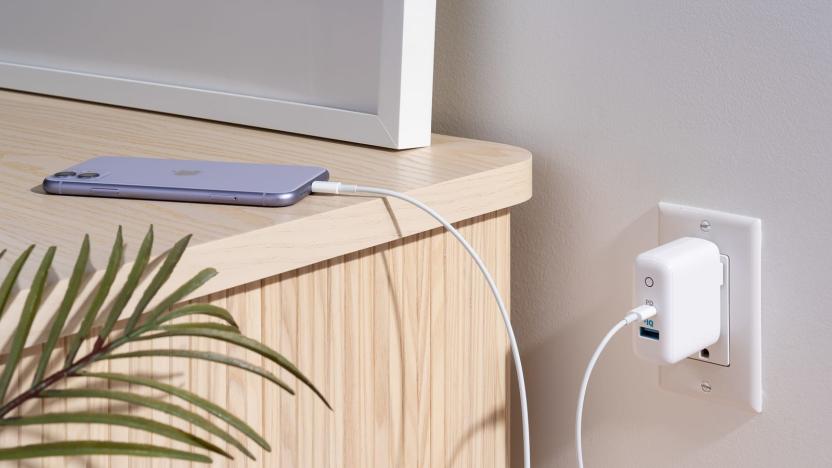
The best USB phone charger
By Nick Guy This post was done in partnership with Wirecutter. When readers choose to buy Wirecutter's independently chosen editorial picks, Wirecutter and Engadget may earn affiliate commission. Read the full guide to USB phone charger. The best USB phone chargers can power your phone as rapidly as it and your cable will allow. After testing 16 power adapters this year, we've determined that the Anker PowerPort PD 2 is the best option for charging any phone. No matter which cable or port you use to charge, you'll get the fastest rate possible. And the PowerPort PD 2 can support maximum speeds on both ports at the same time. If you have an iPhone 8 or later, you'll need to buy a USB-C–to–Lightning cable to take advantage of the faster charging that the smaller, rounded USB-C ports offer. (The new iPhone 11 Pro and 11 Pro Max come with a USB-C–to–Lightning cable, while every other iPhone continues to ship with a USB-A–to–Lightning cable.) If you have an Android phone and a USB-C cable already, you won't need to buy anything extra to fast-charge with our USB-C picks.

The best Christmas lights
By Doug Mahoney and Thom Dunn This post was done in partnership with Wirecutter. When readers choose to buy Wirecutter's independently chosen editorial picks, Wirecutter and Engadget may earn affiliate commission. Read the full guide to christmas lights. Christmas lights bring a unique glimmering warmth to your holiday season—or your backyard, your favorite dive bar, or really anywhere else, for that matter. After more than 100 hours of researching, interviewing experts, and testing more than 25 different string light sets since 2014, we believe GE's Energy Smart Colorite LED Miniature Lights (available in strands of 100 bulbs in multicolor or warm white) offer a combination of light quality, color accuracy, and wide availability that has been unmatched among competitors since we began recommending GE's Colorites five years ago. Like all LED models, the GE Colorite lights are safer, more durable, and longer lasting than traditional incandescent lights, and they barely draw any electricity at all. Among the LEDs we looked at, we found that the GE Colorites' hues of warm white and especially multicolor closely matched those of traditional incandescents. They also have a tidy wire that doesn't curl or twist, simplifying the task of draping them through a tree or storing them in the off-season. The bulbs should last for at least 10 holiday seasons, and you can replace individual bulbs if they go out (or you can just leave those; the rest of the strand will stay lit). Although you can use the Colorites outdoors, we think they're best for indoor use, since the bulbs aren't completely watertight. Overall, these lights offer better benefits and have fewer drawbacks than any other indoor lights we tested. The GE lights have sold out quickly the past few years, so if that happens again, we recommend the Christmas Designers T5 Smooth LED Christmas Lights (available in warm white, multicolor, or solid color). In our tests the multicolor lights looked as good as the GEs, while the warm white lights had a cooler tone that was a little further from the coziness of an incandescent. For outdoor use, we recommend the Christmas Lights Etc Kringle Traditions Wide-Angle 5mm Outdoor LED Christmas Tree Lights, available in white, multicolor, or single color in a variety of lengths and bulb spacings. These lights offer all of the benefits of LEDs as well as a design that makes each bulb impervious to moisture for weeks in the snowy, sleety, rainy outdoors—we confirmed that by leaving a lit set submerged in a water-filled bucket all day. We liked the warmth of the color, the bright light output, and the manageable wires. Due to the unusual design of the wide-angle bulb, the brightness of each changes dramatically depending on where you're standing, giving the lights texture and depth when they're draped over a tree or twisting around a porch post. Because they're likely to be exposed to harsh exterior conditions, these lights have a shorter lifespan than indoor LEDs, but you can still expect six or seven seasons out of them. The only major drawback is that they're a bit too bright for indoor use. Pro lighting designers and other experts have consistently named this particular type of bulb as the ideal choice for outdoor holiday-lighting displays. If the Christmas Lights Etc lights aren't available, Christmas Designers makes a similar string light that's just as good but a little less bright. Last, if you're not ready to give up the unique warm twinkle of incandescents for an indoor tree, Christmas Lights Etc's Clear Christmas Tree Mini Lights are our favorites. These mini-light sets emit the warmest overall light, and like our other picks, they have an easy-handling wire. They also cost less than an LED strand, but they're not as durable, they're less efficient, and they won't last as long—you can expect 2,000 to 3,000 hours of use, versus an average life of 20,000 hours for our pick. That's just the bulb life, too, not even taking into account how fragile and easily breakable an incandescent filament is. If you can't decide between white or multicolor lights, the GE Color Choice Multi or Warm White Multi Function LEDs offer the best of both worlds. A small control box near the plug lets you choose white, multicolor, or both, in a variety of flashing and steady lighting options. The colors aren't as good as what you get with a dedicated white or multicolor string light set, though; the white in particular is more neutral and bland than warm, and the green is somewhat lime-like. But we think that's a fair trade-off for their flexible usage. One thing to keep in mind: Although the lights themselves are generally safe for outdoor use, the control box can malfunction in the wrong conditions, so try to plug it in somewhere that's safe and dry.